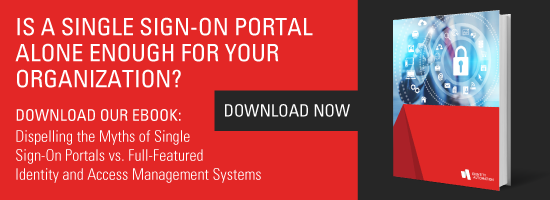
Identity lifecycle management presents a number of challenges: You need to quickly onboard employees so that they have access to the applications needed to do their jobs, you need to immediately offboard them when they leave the organization so they’re not a security threat, and you need to ensure IT isn’t bogged down with all changes in between as employees shift roles, get promoted, change locations, and so on.
Without the right tools, identity lifecycle management at scale can be a nightmare. With legacy and homegrown identity and access management (IAM) systems, many identity-related tasks are highly manual, time-consuming, and laborious. Human errors, such as employees not getting the access they need, accumulating too much access, or retaining access after they leave, are all but inevitable.
That’s where modern IAM solutions come in. They address these issues by automating and streamlining the full identity lifecycle for all users. In part one of this two-part series, let’s first take a look at some of the most common challenges related to onboarding and granting access and how modern IAM helps organizations tackle them.
Challenge 1: Determining Which Birthright Permissions to Give an Employee
New employees must be provisioned with proper permissions, but this can be a challenge for IT staff who are unlikely to know offhand what systems and applications an employee need access to or the level of access required. Furthermore, permissions are a balancing act; too few permissions leaves the user without access to critical resources needed to do his or her job, while too many permissions opens the organization up to security risks.
Solution: Modern IAM enables organizations to implement role- and attribute-based access controls that automatically add and remove access rights according to a user’s specific attributes or role. By providing a database of roles determined by location, manager, department, or other variables, IT administrators can easily assign users the proper permissions without any guesswork or room for error.
Challenge 2: Lengthy Onboarding and Providing Employees with Day One Access
No new employee wants to spend his or her first day waiting for access to network resources, and nowadays, it’s not uncommon for employees to require access to resources even before their start date. However, with legacy and homegrown IAM systems, it’s time-consuming and tedious for the IT department to individually create accounts in all downstream systems and provision the correct level of access. Moreover, this process is prone to errors and delays.
Solution: Modern IAM solutions automate the onboarding process with real-time provisioning. When HR adds someone to the HRIS system, an account can automatically be created and provisioned with the correct access in all downstream systems—whether on-premises or cloud-based—using predefined governance policies.
Challenge 3: Handling Ad-Hoc Access Needs
For the majority of use cases, traditional RBAC and ABAC can be leveraged to dynamically assign roles and other access. However, there will always be exceptions, such as users who require one-off or occasional access to a system or application that isn’t required for their day-to-day jobs. For example, a user working on a collaborative project might require temporary access to a different department’s resources.
Solution: Some modern IAM solutions enable just-in-time access that gives users access to applications or systems for predetermined periods of time on an as-needed basis. When time expires, access is automatically revoked. This is particularly beneficial for limiting access to privileged systems. Users simply request the access they need via a workflow process; there’s no need to submit help tickets or wait for the request to go up the managerial chain of command.
With the ability to automate granting access, modern IAM not only takes the guesswork out of determining and maintaining employee permissions, but also ensures a more positive end-user experience and less burden on IT. Stay tuned for part two of our onboarding and offboarding series, where we'll take closer look at the four more identity lifecycle management challenges that organizations commonly struggle with if they don't have the right IAM solution in place.


Comments